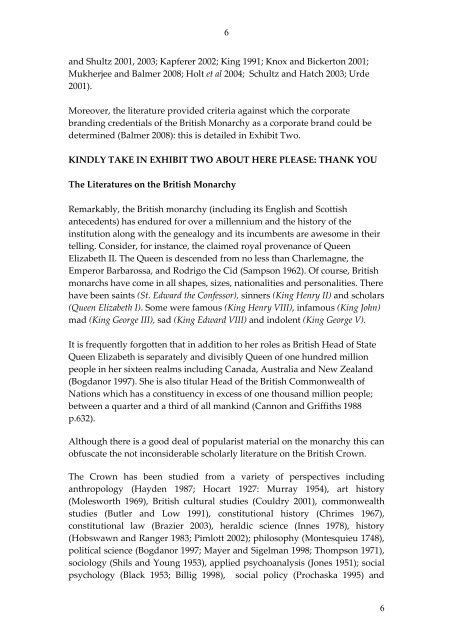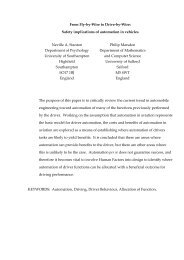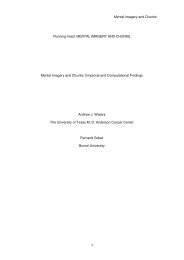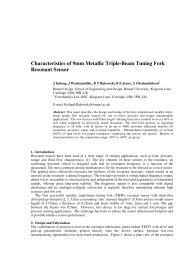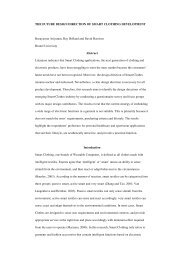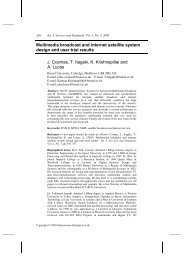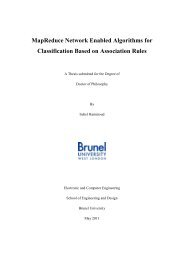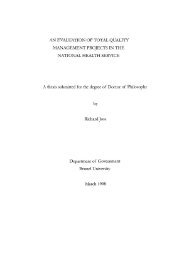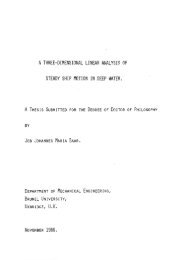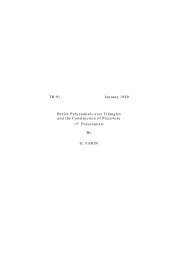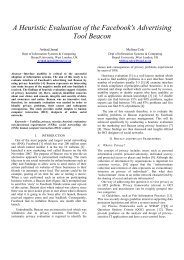insights from the british monarchy - BURA - Brunel University
insights from the british monarchy - BURA - Brunel University
insights from the british monarchy - BURA - Brunel University
Create successful ePaper yourself
Turn your PDF publications into a flip-book with our unique Google optimized e-Paper software.
and Shultz 2001, 2003; Kapferer 2002; King 1991; Knox and Bickerton 2001;<br />
Mukherjee and Balmer 2008; Holt et al 2004; Schultz and Hatch 2003; Urde<br />
2001).<br />
Moreover, <strong>the</strong> literature provided criteria against which <strong>the</strong> corporate<br />
branding credentials of <strong>the</strong> British Monarchy as a corporate brand could be<br />
determined (Balmer 2008): this is detailed in Exhibit Two.<br />
6<br />
KINDLY TAKE IN EXHIBIT TWO ABOUT HERE PLEASE: THANK YOU<br />
The Literatures on <strong>the</strong> British Monarchy<br />
Remarkably, <strong>the</strong> British <strong>monarchy</strong> (including its English and Scottish<br />
antecedents) has endured for over a millennium and <strong>the</strong> history of <strong>the</strong><br />
institution along with <strong>the</strong> genealogy and its incumbents are awesome in <strong>the</strong>ir<br />
telling. Consider, for instance, <strong>the</strong> claimed royal provenance of Queen<br />
Elizabeth II. The Queen is descended <strong>from</strong> no less than Charlemagne, <strong>the</strong><br />
Emperor Barbarossa, and Rodrigo <strong>the</strong> Cid (Sampson 1962). Of course, British<br />
monarchs have come in all shapes, sizes, nationalities and personalities. There<br />
have been saints (St. Edward <strong>the</strong> Confessor), sinners (King Henry II) and scholars<br />
(Queen Elizabeth I). Some were famous (King Henry VIII), infamous (King John)<br />
mad (King George III), sad (King Edward VIII) and indolent (King George V).<br />
It is frequently forgotten that in addition to her roles as British Head of State<br />
Queen Elizabeth is separately and divisibly Queen of one hundred million<br />
people in her sixteen realms including Canada, Australia and New Zealand<br />
(Bogdanor 1997). She is also titular Head of <strong>the</strong> British Commonwealth of<br />
Nations which has a constituency in excess of one thousand million people;<br />
between a quarter and a third of all mankind (Cannon and Griffiths 1988<br />
p.632).<br />
Although <strong>the</strong>re is a good deal of popularist material on <strong>the</strong> <strong>monarchy</strong> this can<br />
obfuscate <strong>the</strong> not inconsiderable scholarly literature on <strong>the</strong> British Crown.<br />
The Crown has been studied <strong>from</strong> a variety of perspectives including<br />
anthropology (Hayden 1987; Hocart 1927: Murray 1954), art history<br />
(Molesworth 1969), British cultural studies (Couldry 2001), commonwealth<br />
studies (Butler and Low 1991), constitutional history (Chrimes 1967),<br />
constitutional law (Brazier 2003), heraldic science (Innes 1978), history<br />
(Hobswawn and Ranger 1983; Pimlott 2002); philosophy (Montesquieu 1748),<br />
political science (Bogdanor 1997; Mayer and Sigelman 1998; Thompson 1971),<br />
sociology (Shils and Young 1953), applied psychoanalysis (Jones 1951); social<br />
psychology (Black 1953; Billig 1998), social policy (Prochaska 1995) and<br />
6


